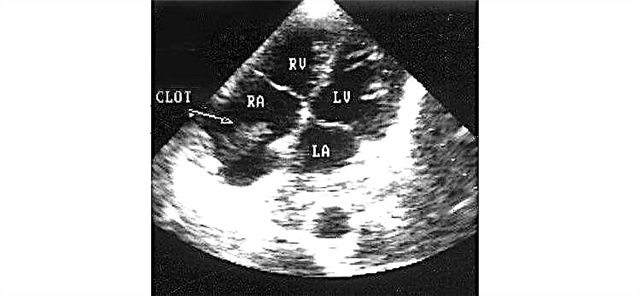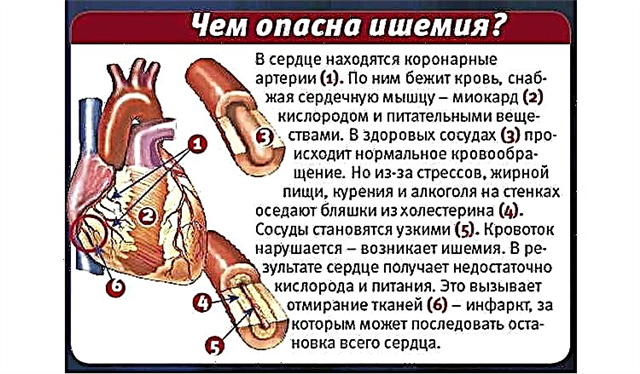The circumstances under which a sore throat worries speaks a lot about the pathology, the manifestation of which was this symptom. For infectious and inflammatory diseases of the oropharyngeal structures, pain is typical that arises or intensifies during swallowing, combined with intoxication syndrome, and often also with a runny nose, cough. Much less common is the situation when the onset of pain is observed in the process of yawning. Sometimes complaints of such pain become dominant among the symptoms of concern to the patient. Why does your throat hurt when yawning? What should be the treatment in this case?
Causes
 Sore throat is a symptom that cannot be called rare. It occurs in viral and bacterial infections of the oropharynx, and can also be a sign of a fungal infection. However, in this case, other manifestations are often present - for example, an increase in body temperature, nasal congestion, headache, and after clarifying the list of symptoms, one or another diagnosis can be assumed.
Sore throat is a symptom that cannot be called rare. It occurs in viral and bacterial infections of the oropharynx, and can also be a sign of a fungal infection. However, in this case, other manifestations are often present - for example, an increase in body temperature, nasal congestion, headache, and after clarifying the list of symptoms, one or another diagnosis can be assumed.
There are several pathologies for which the onset of pain is typical at the moment of yawning. At the same time, provocation of pain syndrome by other actions (conversation, eating) is not excluded - however, the key feature is the absence of signs of an infectious disease. As a rule, such pathologies have a chronic course and are associated either with anatomical abnormalities, which entail changes of a different nature, or with neurological disorders. These include:
- Styloid process syndrome.
- Glossopharyngeal neuralgia (YN).
It should be emphasized that there is a fundamental difference between the pain provoked by yawning in angina, pharyngitis and other infectious and inflammatory diseases and pain in the pathologies mentioned in the list above. In the first case, patients do not distinguish "special" pain zones, and discomfort is localized on both sides, delivering the same discomfort to the right and left. In the second case, the patient in the complaints clearly outlines the boundaries of the area, the pain in which he is worried about. Irradiation (recoil) to the ears, jaw, neck can be observed in any of these diseases.
Pain in glossopharyngeal neuralgia and styloid syndrome is always one-sided.
Bilateral forms with these pathologies, as a rule, do not occur. During the initial diagnosis of glossopharyngeal neuralgia, pain on the one hand is considered as one of the typical "supporting" signs. Defeat on both sides at once is possible with styloid syndrome.
The onset of pain when yawning is also characteristic of the chronic course of tonsillitis. Outside of exacerbation, the patient may feel discomfort, and painful sensations appear only with certain actions - an attempt to yawn, swallow saliva. Moreover, not all patients note a similar symptom, it is not mandatory in the clinical picture.
Styloid syndrome
 The styloid syndrome is understood as a symptom complex that appears as a result of a change in the size or location of the named anatomical structure. In the presence of changes on the part of the stylohyoid ligament, they speak of stylohyoid syndrome. However, when sore throat is indicated as the main manifestation, we are usually talking about one of the clinical variants of the named pathology - stylopharyngeal syndrome.
The styloid syndrome is understood as a symptom complex that appears as a result of a change in the size or location of the named anatomical structure. In the presence of changes on the part of the stylohyoid ligament, they speak of stylohyoid syndrome. However, when sore throat is indicated as the main manifestation, we are usually talking about one of the clinical variants of the named pathology - stylopharyngeal syndrome.
The styloid process departs from the temporal bone, three muscles and two ligaments are attached to it, one of which is the stylohyoid. When symptoms characteristic of the stylopharyngeal and / or stylohyoid syndrome appear, the following changes are detected:
- lengthening and / or curvature of the styloid process;
- calcification (ossification, deposition of calcium salts in the tissue) of the stylohyoid ligament;
- a combination of changes in the styloid process and stylohyoid ligament.
In itself, a change in the shape or length of the appendix does not mean disease. "Non-standard" styloid processes are found in many people, but only in certain cases is their presence accompanied by characteristic symptoms. Sometimes signs of pathology are found after an injury, as a result of which a curvature of the styloid process occurs, as well as after an operation to remove the tonsils - tonsillectomy.
It is worth saying that a sore throat of varying intensity when yawning – only one of the possible signs of stylopharyngeal syndrome. Often, patients are worried about constant excruciating pain, which intensifies towards the end of the day. In some cases, the pain syndrome is mild, the discomfort is insignificant and appears periodically.
Painful sensations during yawning are often attributed to painful dysfunction of the muscles attached to the styloid process.
This mechanism of development of the styloid process syndrome has been considered relatively recently. The pain is provoked by excessive and prolonged opening of the mouth; similar sensations arise after treatment with a dentist in a forced position with open jaws. Among the reasons, experts also point to an overload of the masticatory muscles.
Pain is often combined with a foreign body sensation in  throat, sore throat, headache, may radiate:
throat, sore throat, headache, may radiate:
- Into ear.
- In the lower jaw.
- To the temporal region.
- Into the submandibular region.
To confirm the diagnosis, imaging methods are needed - in particular, radiography. Even if the patient is not worried about any other symptoms other than pain when yawning, it is worth conducting research to exclude or confirm the presence of changes in the styloid process.
Neuralgia
The glossopharyngeal nerve is one of the twelve cranial nerves and has both motor and sensory fibers. JAN neuralgia develops as a result of various pathological processes, among which are:
- aneurysms of the internal carotid artery;
- chronic tonsillitis;
- chronic intoxication of various types;
- tumors of the cerebellopontine angle;
- laryngeal tumors.
Stylohyoid syndrome remains one of the most common etiological factors. Pain is most often explained by trauma to the amygdala by an enlarged styloid process. Calcification of the stylohyoid ligament is also important. In addition, there are assumptions about the connection of neuralgia of the JN with atherosclerosis.
The pain always occurs on only one side and is accompanied by dry mouth, which, after the end of the attack, is replaced by abundant salivation (salivation) - also one-sided. Yawning is not the only provoking factor, and besides, it leads to an attack less often than talking, swallowing or irritation of the tongue root and tonsils (these are the so-called trigger zones).
The pain is severe, described as burning, shooting, stabbing, resembling an electric shock. It appears suddenly and persists for a short time - usually up to several minutes. In this case, the attacks can be repeated one after the other. During an attack, the patient may lose consciousness, which is explained, however, not by the intensity of the pain, but by irritation of one of the nerve branches and inhibition of the vasomotor and respiratory centers.
A characteristic feature of neuralgia is the association of pain with a provocative effect (for example, yawning) and a rapid cessation of the attack.
The classic course of JAN neuralgia is considered to be wave-like: the acute onset is replaced by remission of varying duration.In the future, the disease progresses, pain attacks appear more often, can become almost constant, which significantly worsens the patient's condition. At the same time, the intensity of the pain syndrome increases.
Treatment
To select a therapy, it is necessary to find out the cause of the pain. For infectious and inflammatory diseases of the oropharynx and tonsils (pharyngitis, tonsillitis, etc.), methods such as are shown:
- Etiotropic therapy (if possible, affect the pathogen).
These are antibacterial, antiviral, or antifungal drugs. They are used empirically (based on the assumption of a probable pathogen and an assessment of the main characteristics of the clinical picture) or according to the results of identification of the pathogen (by inoculation on nutrient media, ELISA and PCR methods, etc.).
- Pathogenetic and symptomatic therapy.
Patients are prescribed anti-inflammatory drugs in tablets, powders and rinses, sprays. They can also include local antiseptics, anesthetics and other necessary components.
The need for the listed medicines is determined by the doctor after a comprehensive examination.
Treatment of patients with established styloid syndrome may be  conservative and surgical. It should be said right away that conservative therapy with a significantly lengthened and / or curved styloid process does not give a satisfactory and, what is important, long-lasting effect. The same goes for calcification of the stylohyoid ligament. However, the syndrome is characterized by a variety of manifestations, and treatment tactics should be discussed with the attending physician, based on objective data, including anatomical data displayed on radiographs.
conservative and surgical. It should be said right away that conservative therapy with a significantly lengthened and / or curved styloid process does not give a satisfactory and, what is important, long-lasting effect. The same goes for calcification of the stylohyoid ligament. However, the syndrome is characterized by a variety of manifestations, and treatment tactics should be discussed with the attending physician, based on objective data, including anatomical data displayed on radiographs.
What is the conservative treatment? Patients are prescribed drugs with analgesic, local anesthetic and anti-inflammatory effects:
- Metamizole sodium;
- Hydrocortisone;
- Novocaine, Lidocaine, etc.
They are injected; some dosage forms are also prescribed in tablets for oral administration.
Anti-inflammatory sprays, gargles, and other classic throat treatments for styloid syndrome are ineffective.
Surgical treatment involves resection, that is, excision (partial removal) of the styloid process on the affected side. This is the most effective way to relieve the suffering of the patient. The volume and method of surgery is chosen by the attending physician, based on objective data. If calcification of the stylohyoid ligament is found, it is usually also removed.
When confirming the diagnosis of JAN neuralgia, it is necessary:
- treatment of the underlying pathology that caused the development of neuralgia;
- the appointment of anticonvulsants (Finlepsin, Carbamazepine);
- the appointment of B vitamins.
Also, the root of the tongue is lubricated with anesthetics (Dikain, Procain) or their injection into the named area. Various methods of physiotherapy are used: electrophoresis, diadynamics, etc. If conservative treatment is ineffective, the possibility of surgical intervention is considered.



